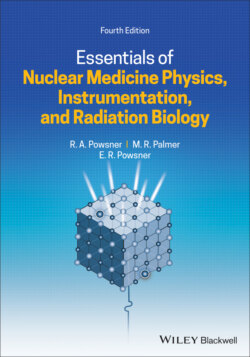Читать книгу Essentials of Nuclear Medicine Physics, Instrumentation, and Radiation Biology - Rachel A. Powsner - Страница 71
Radionuclide production
ОглавлениеThere is often more than one way to make a radionuclide. For example, 111In is most commonly made in a cyclotron using the 112Cd(p,2n)111In reaction but it can also be made from a cadmium‐111 target using the 111Cd(p,n)111In reaction or from a silver‐109 target in the reaction 109Ag(α,2n)111In. The tradeoffs involve the relative efficiencies of production for various cyclotron energies and the issues involved in separating and purifying the product. In general, bombardment of a target by charged particles in a cyclotron increases the charge to mass ratio and so nuclei in the product are likely to be charge‐rich (neutron‐poor) and thus decay via beta‐plus decay or electron capture. This is the reason that most PET radionuclides, such as 18F, are produced using a cyclotron. Conversely, bombarding a target with neutrons in a reactor tends to increase the mass of the target nuclei rendering them neutron‐rich and thus likely to decay by beta‐minus decay.
